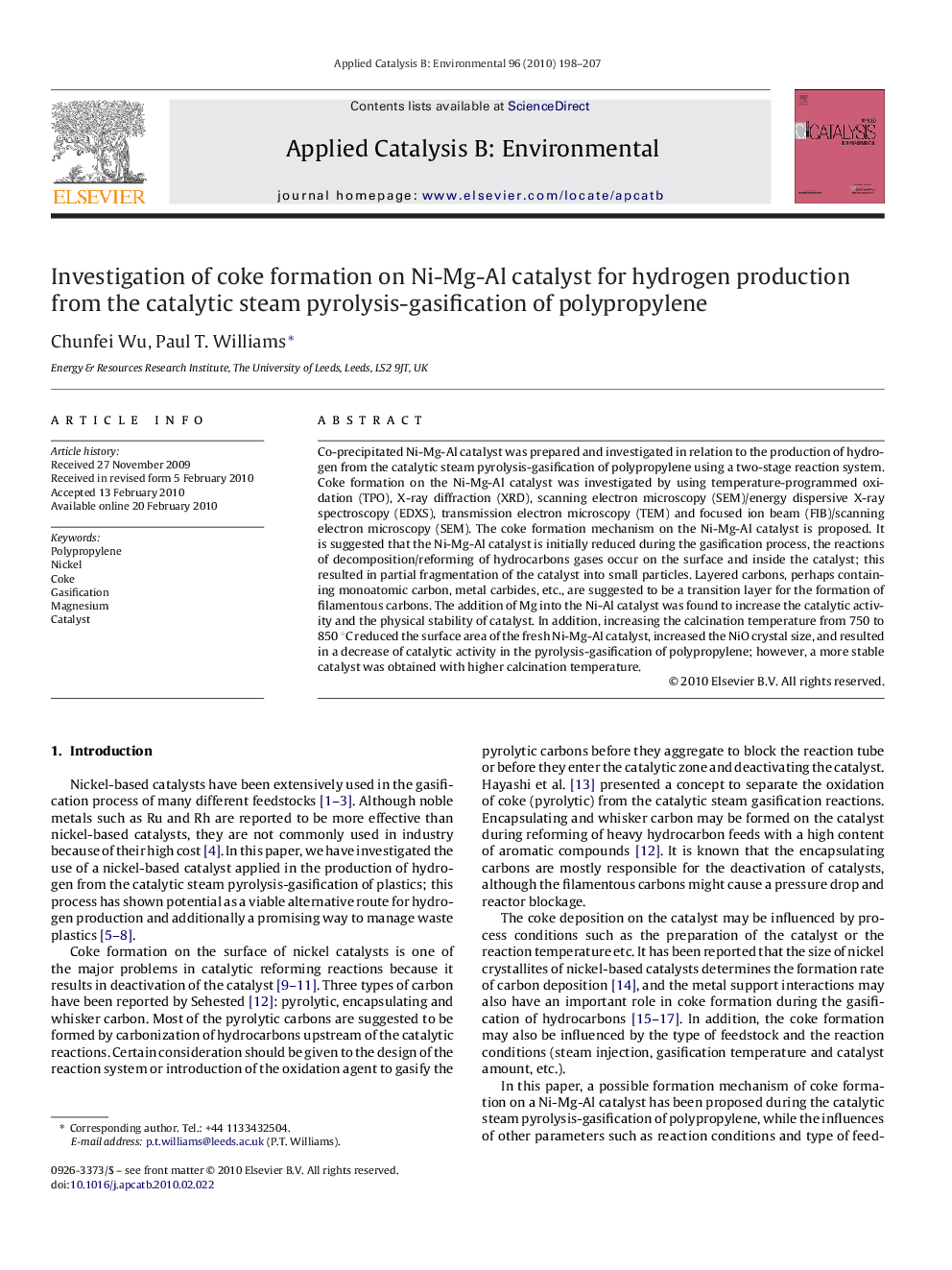| Article ID | Journal | Published Year | Pages | File Type |
|---|---|---|---|---|
| 47463 | Applied Catalysis B: Environmental | 2010 | 10 Pages |
Co-precipitated Ni-Mg-Al catalyst was prepared and investigated in relation to the production of hydrogen from the catalytic steam pyrolysis-gasification of polypropylene using a two-stage reaction system. Coke formation on the Ni-Mg-Al catalyst was investigated by using temperature-programmed oxidation (TPO), X-ray diffraction (XRD), scanning electron microscopy (SEM)/energy dispersive X-ray spectroscopy (EDXS), transmission electron microscopy (TEM) and focused ion beam (FIB)/scanning electron microscopy (SEM). The coke formation mechanism on the Ni-Mg-Al catalyst is proposed. It is suggested that the Ni-Mg-Al catalyst is initially reduced during the gasification process, the reactions of decomposition/reforming of hydrocarbons gases occur on the surface and inside the catalyst; this resulted in partial fragmentation of the catalyst into small particles. Layered carbons, perhaps containing monoatomic carbon, metal carbides, etc., are suggested to be a transition layer for the formation of filamentous carbons. The addition of Mg into the Ni-Al catalyst was found to increase the catalytic activity and the physical stability of catalyst. In addition, increasing the calcination temperature from 750 to 850 °C reduced the surface area of the fresh Ni-Mg-Al catalyst, increased the NiO crystal size, and resulted in a decrease of catalytic activity in the pyrolysis-gasification of polypropylene; however, a more stable catalyst was obtained with higher calcination temperature.
